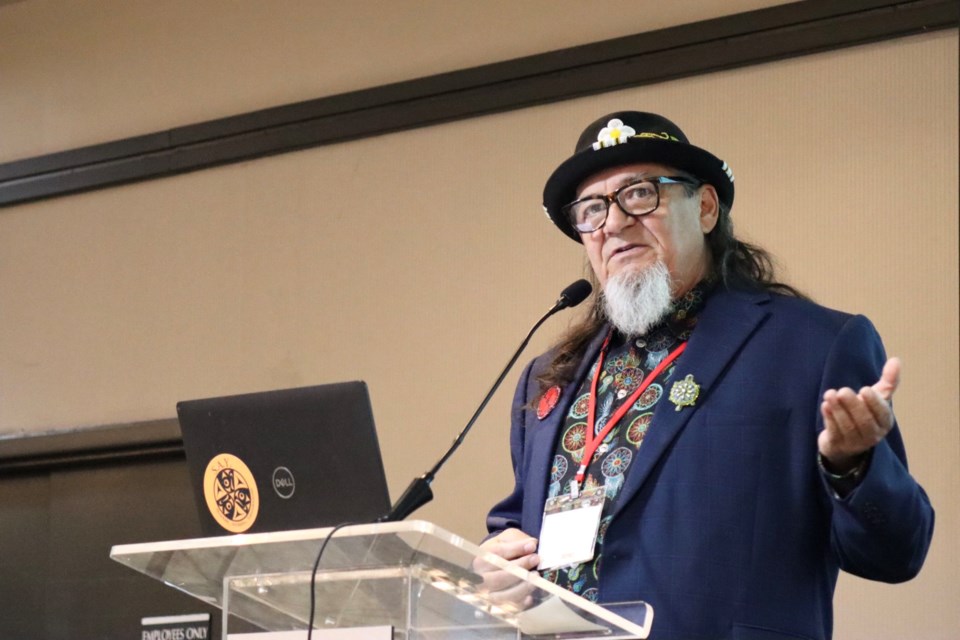When Anthony Laforge had his first dealings with a resource extraction company, it was a crash course in how not to do consultation.
The company had submitted its closure plan for a graphite mining operation in the town of Kearney and, as the lands manager for neighbouring Magnetawan First Nation, it was Laforge’s job to review it.
The community was given 30 days to review the plan. But by the time Laforge saw it for the first time, it had already been sitting on the chief’s desk for five days, he recalled.
That left Laforge just 24 days to give his assessment on a file that was essentially new for him.
“I was under the gun. I (didn’t) know what I’m doing, but you gotta review that,” recalled Laforge, a member of the Nipissing First Nation. “That’s part of the process.”
That was more than two decades ago and, since then, the process has changed dramatically, thanks, in large part, to the introduction of Call to Action 92 resulting from Canada’s Truth and Reconciliation Commission, Laforge said.
Under that recommendation, corporate Canada is called upon to engage in meaningful consultation with Indigenous peoples, build respectful relationships, and get consent before proceeding with economic development projects, and to also provide Indigenous peoples with equitable access to jobs, training and education in the corporate sector.
In that vein, Laforge is optimistic about the changes he’s seeing right across the country.
“That’s what I’m finding these days is that the private sector is coming to the First Nations now, and the ministries are opening up, and we’re moving the yard sticks,” he said. “So it’s very important to keep up.”
Laforge appeared as a guest speaker during the inaugural Economic Development Opportunities Forum, being hosted by the Anishinabek Nation in Bawating (Sault Ste. Marie), Oct. 24-26. Over those three days, Indigenous economic development leaders and allies are gathering to discuss how to access and sustain economic opportunities.
Want more business news from the North? Sign up for our newsletter.
Now the lands manager with Wahnapitae First Nation, whose territory extends north of Sudbury, Laforge emphasized the importance of relationship-building for Indigenous communities seeking new economic development opportunities.
At Wahnapitae First Nation, the community has a mineral development advisor who’s the first point of contact for any communication on any mining project involving the community.
Laforge advised communities to do thorough research on any potential proponents they might get into business with prior to forming a partnership and establishing an engagement protocol that outlines the framework for doing business.
“This is actually an agreement before you even get to an agreement or an IBA (impact benefit agreement),” Laforge said. “You create an engagement protocol, and in that engagement protocol you have your expectations.
“You make sure everybody knows what they’re in for and where you want to get to, what you want to achieve.”
That includes setting out a budget so that community members can be trained and get up to speed on the industry and the project.
In negotiations, Laforge said communities need to be specific in asking companies for financial compensation. Don’t ask for $10 million "just because," he said. Outlining to the company what it’s earmarked for — environmental stewardship, cultural awareness, employment and training — will work in the community’s favour.
“Each one of these has a cash value to them,” Laforge said. “If you want to get $10 million, this is how you justify your ask. Make sure you do it for the community.”
Wahnapitae First Nation has struck numerous service agreements with area mining companies, including Glencore and Vale, with Laforge calling those “gravy” on top of their IBAs.
More recently, communities are seeing the benefits from government agencies and the private sector sole sourcing in their traditional territories — instead of tendering out a service contract, a company or agency will simply approach the First Nation to do the work.
Laforge noted that he currently sits on the board of Shwe Miikaan, a construction services company jointly owned by Shawanaga, Magnetawan and Henvey Inlet First Nations that was forged to benefit from the four-laning of Highway 69/400, which connects Northern Ontario with the southern part of the province.
In August, the company struck a teaming agreement with SNC-Lavalin, which will enable Shwe Miikaan to secure road construction work along the route.
One project alone calls for fencing to be erected alongside 72 kilometres of highway. Though it’s just one piece of a much larger project, it enables Shwe Miikaan to “get in the game,” developing expertise and generating revenue for the member communities, Laforge said.
Long term, the company also plans to bid on area maintenance contracts to help maintain highway infrastructure for years down the road.
“You think to yourself: do you want 49 per cent of something, or 100 per cent of nothing?” Laforge said.
“When you’ve got a sole source, you’ve got the key. Take that advantage and make sure you have your partnerships ready to get those contracts.”




